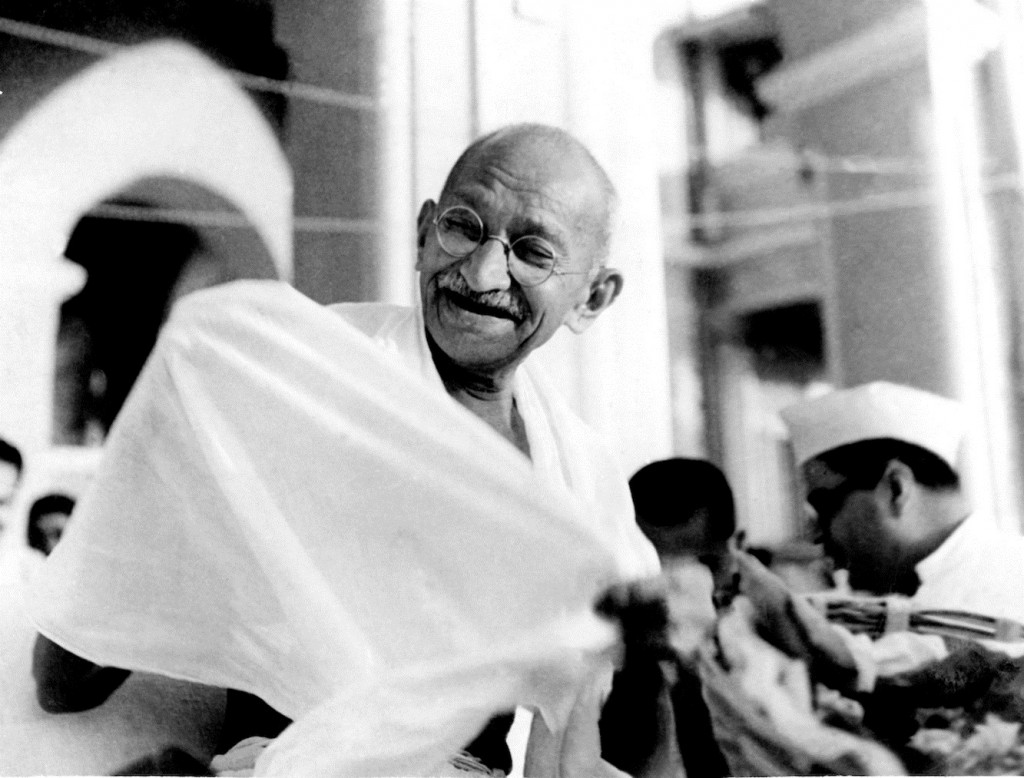Once upon a time, you closed your eyes and supported Labour candidates during general elections if you were an Indian voter. If you voted Tory, you did so in the privacy of the polling booth and kept quiet about your apparent treachery. I also knew of some Indians who joined the Conservative Party and immediately invested in striped blue shirts and cufflinks, became members of the posh Carlton Club and put on fake upper-class English accents to try and fit in.
Much of that has changed. Last week, I attended a dinner hosted jointly by the Conservative Friends of India, Pakistan and Bangladesh to celebrate the appointment of Sajid Javid (pictured above), son of a Pakistani bus driver, as Britain’s first Asian home secretary. Adapting Sir Isaac Newton’s famous saying (“If I have seen further, it is by standing on the shoulders of giants”), Javid declared: “It is on the shoulders of my mum and dad that I stand before you this evening.”
The Conservative Party, he added, made it possible for the children of immigrants to be both “British and Asian”. It will take a bit more time, though, before Asians can consider themselves to be both “English and Asian”.

Mahatma Gandhi would possibly have been amused
Made in India
Shantanu & Nikhil could become “the Louis Vuitton of India”, it was predicted when the designer brothers held a fashion show in London in the elegant Saatchi Gallery in Chelsea. Since the show was partly to promote khadi, Mahatma Gandhi would possibly have been amused. His image and that of a spinning wheel were the backdrop of the show called, “Independence”. “I am trying to bring patriotic chic,” Shantanu told me. The use of the Gandhi topi as well as chappals for the men was intended to create nostalgia for “India before 1947”, he added.
The show’s London organizer, Samir Ceric, explained the show fits it with the Indian government’s “5f” policy: “Farm to fibre; fibre to fabric; fabric to fashion; and fashion to foreign.” “We decided to produce this show as the first step towards Shantanu and Nikhil entering the London fashion scene in a big way,” said Ceric.
Bridging the gap
There are book launches galore in the UK — for example, I am hoping to meet Ramachandra Guha, who will be in London next week to promote his book, Gandhi: The Years That Changed the World — 1914-1948, and also the British historian David Gilmour, whose account, The British in India: Three Centuries of Ambition and Experience, is laced with wonderful anecdotes.
But Sundeep Bhutoria, who has come over from Calcutta and is currently touring London, Edinburgh, Birmingham, Oxford and Nottingham, has spotted a gap in the market. He wants to extend his Kalam brand under which he has taken Hindi language authors to 25 cities across India. He thinks he can do the same in Britain in a venture that already has the support of the British Council. He has done pilots in London with three writers — the poet Leeladhar Jagoori, Rajesh Reddy and Neelima Dalmia Adhar, author of Father Dearest: The Life and Times of R.K. Dalmia and The Secret Diary of Kasturba. A fourth Kalam event is planned with the author, Geetashree.
At St Xavier’s in Patna, prefects had dispensation to beat us if they caught anyone speaking Hindi outside the vernacular class. This was to improve our spoken English. Still, we ended up being able to read and write Hindi fluently. Sadly, all that is lost after years in England but Sundeep reassures me it can come back: “Just read a few books in Hindi.”
Down memory lane
Luckily, a third of the pupils at my school in England were Jewish. They were academic, high-achieving and many ended up at Oxbridge. They also loved music and organized regular outings to Kenwood House on the edge of Hampstead Heath where there were open air concerts, when I dutifully sat through Mendelssohn, Schubert, Borodin and the like. All these memories came back recently because the idyllic grounds of Kenwood House were the location for a “weekend festival” of ideas organized by the Financial Times.
One session with the paper’s editor and senior journalists discussed whether Britain needed a new centrist party formed by combining Labour right-wing with the Tory left. FT columnist, Lucy Kellaway, also explained why she left her “overpaid job” to become a school teacher, while the Astronomer Royal, Lord Martin Rees, patiently answered questions about manned travel to Mars. I also heard James Crabtree, author of The Billionaire Raj: A Journey Through India’s New Gilded Age, warn about growing inequality in India and describe Mukesh Ambani’s residence in Mumbai near some of the biggest slums in Asia as an “obscenity”. Crabtree’s book is one of six titles that have just been shortlisted for the prestigious Financial Times and McKinsey Business Book of the Year Award for 2018.
Footnote
Often in the middle of winter I drive past the darkened Oval; in my imagination, I can hear sounds from summers past. Massacre Monday is now part of that legacy. I am referring to the fourth day of the final Test match between England and India. No one is begrudging Alastair Cook his farewell century, but Virat Kohli out for a first-ball duck? One consoling note was Sharmila Tagore dropping in for a chat. Her job is always to hand the Pataudi Trophy to the English captain (which she is likely to do again in three or four years). Cricket is partly a mind game and the Indian problem is psychological.











